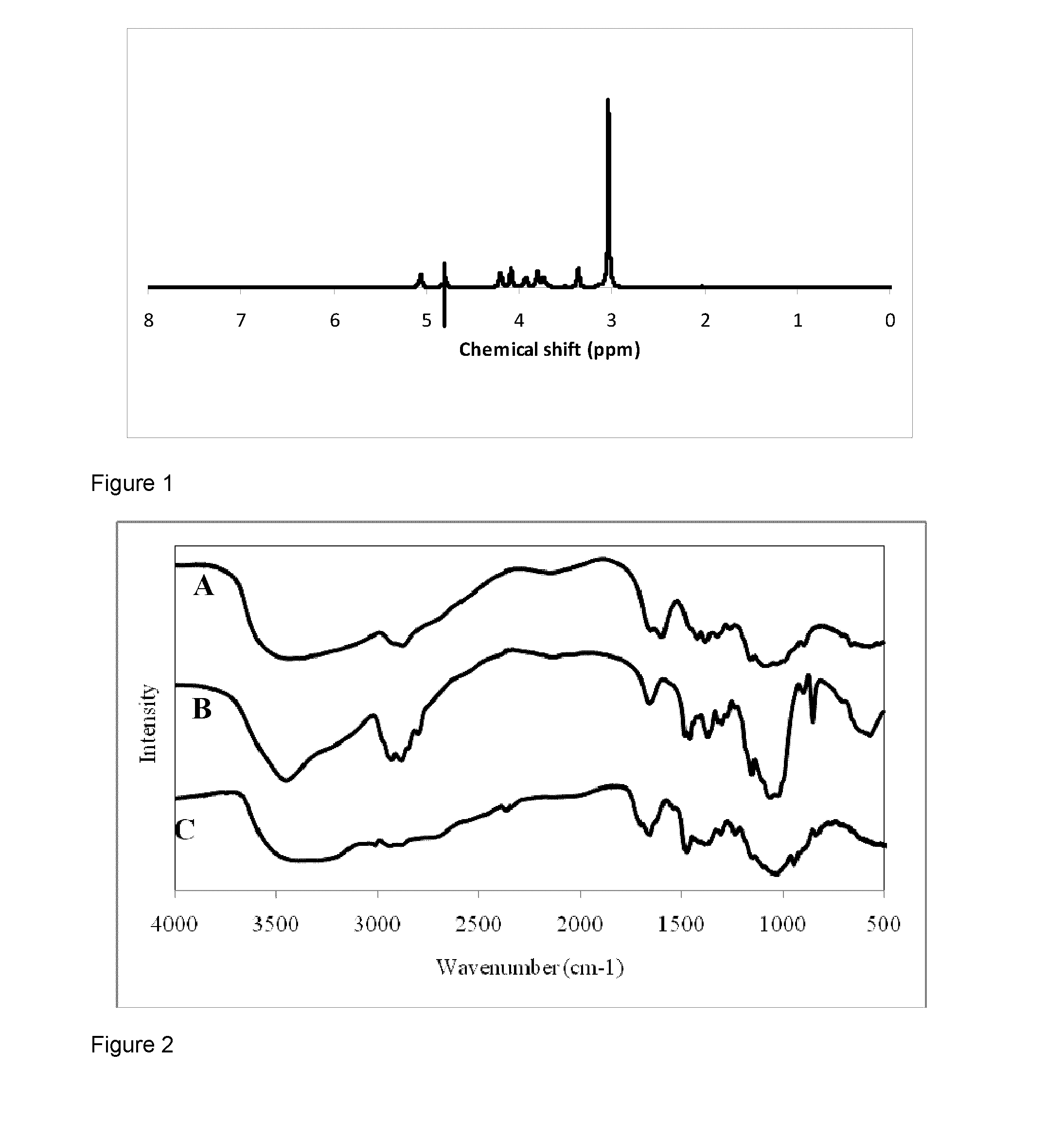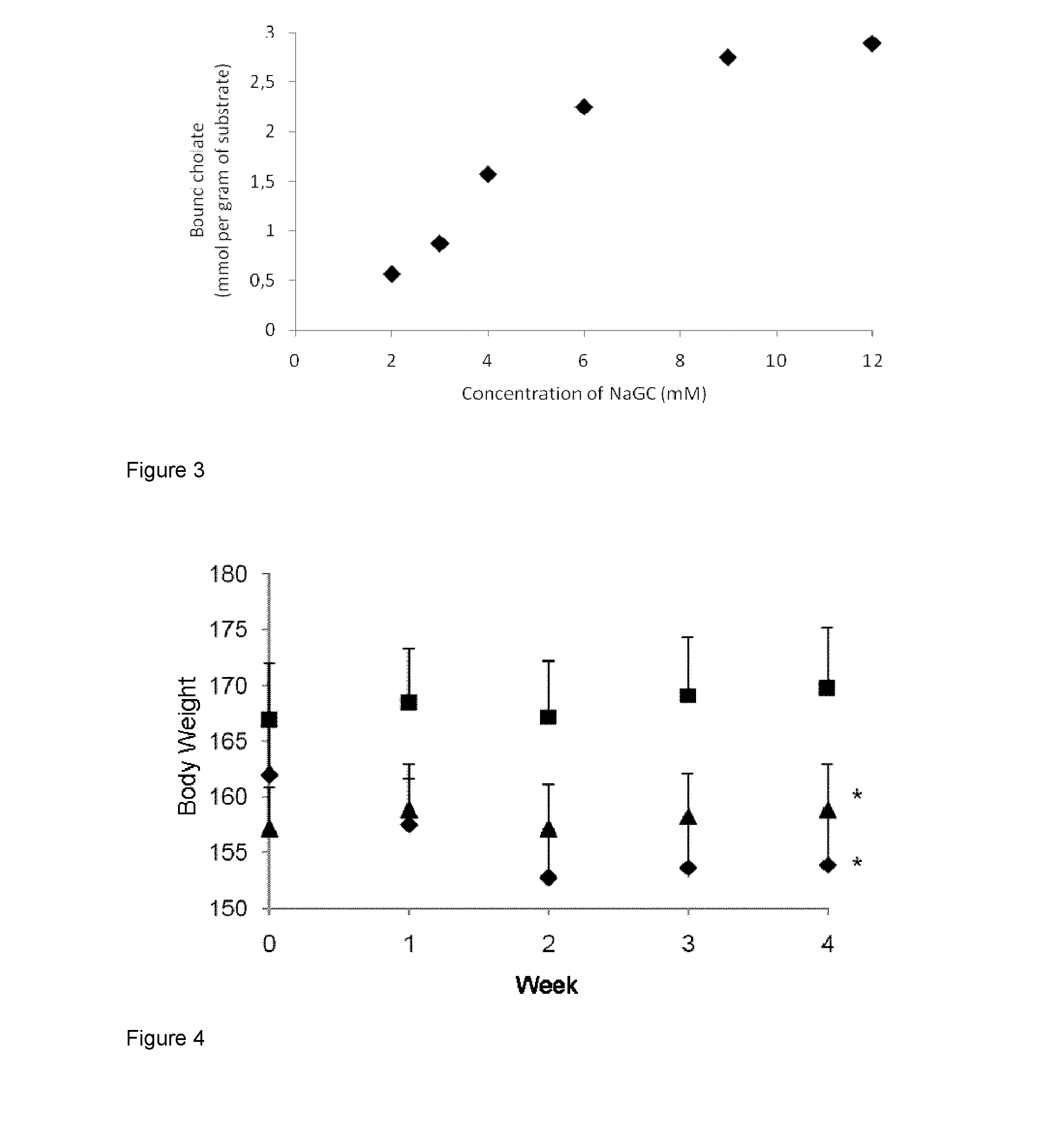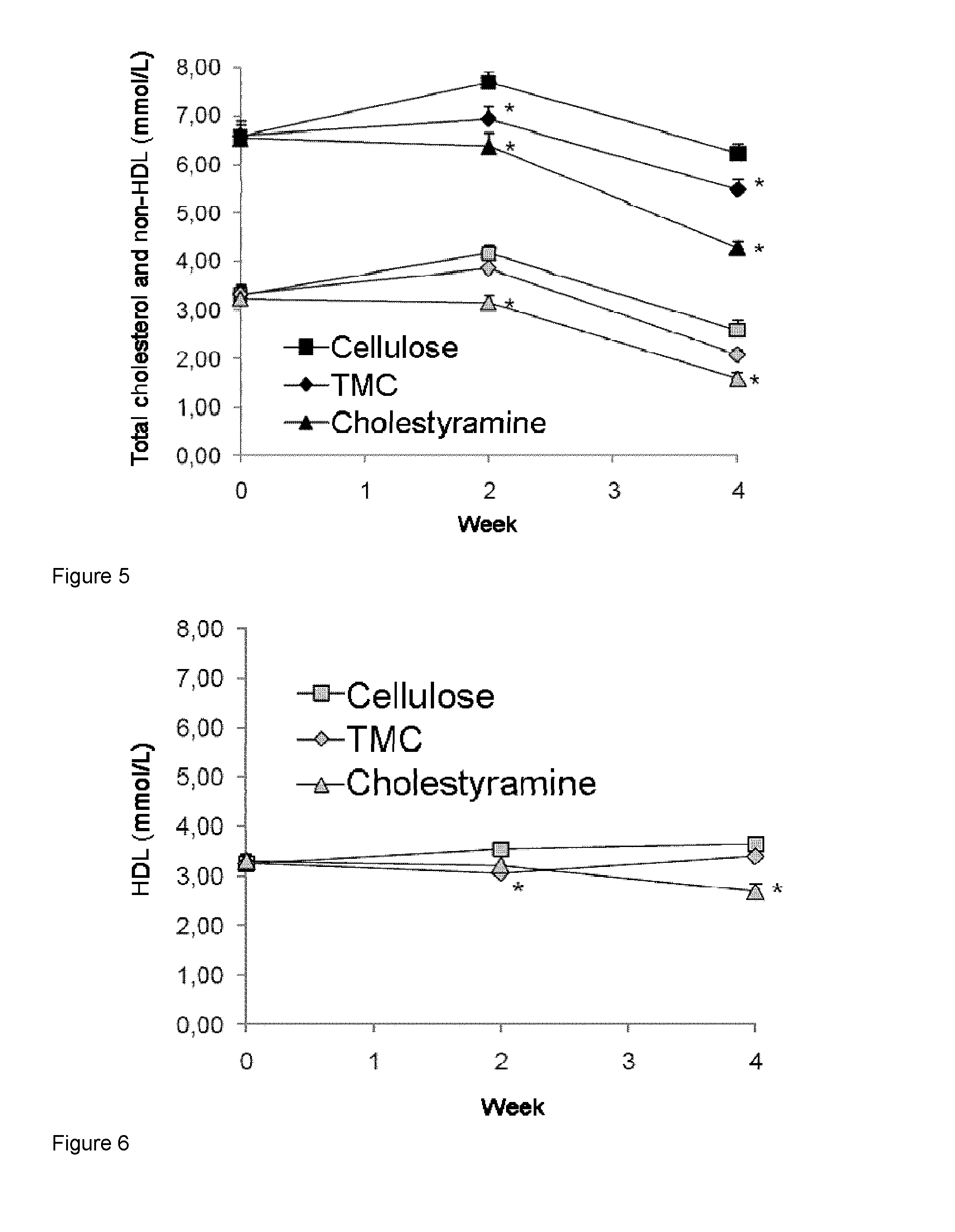N,n,n-trilakylaminopolymers, methods of their preparation and uses thereof
- Summary
- Abstract
- Description
- Claims
- Application Information
AI Technical Summary
Benefits of technology
Problems solved by technology
Method used
Image
Examples
example 1
Synthesis and Characterization of TMC
[0136]In this example, N,N-dimethylchitosan (DMC) is prepared using the Eschweiler-Clarke procedure is described. This is a methylation reaction with formic acid and formaldehyde. As shown below, this methylation procedure possesses the advantage of exclusively methylating amine groups via in situ reduction of an imine group. The Eschweiler-Clarke procedure allows the replacement of prior art iodomethane for primary and secondary donor.
[0137]Then, DMC has been selectively N-methylated to TMC with a DQ of 0.46 using iodomethane and sodium bicarbonate in a DMF / water mixture. As shown in Example 2, this TMC shows sorption efficiency of bile salts comparable to cholestyramine, the most widely used bile acid sequestrant.
Experimental Section
[0138]General Information. High molecular weight chitosan from Nordic shrimp (Pandalus borealis) shells with a degree of deacetylation of 95.9% and a viscosity of 157 cps for a 1% acetic acid aqueous solution was pu...
example 1a
Preparation of N,N-dimethylchitosan (DMC)
[0139]In a 250 mL round-bottomed flask, a solution of chitosan (2.01 g, 12.5 mmol of glucopyranosyl units) in 88% formic acid (100 mL) was prepared. The viscous yellow solution was treated with a 37% formaldehyde solution (16.6 mL, 0.166 mol) and was heated at 90° C. during 23 h. Caution: Depending on the heating rate, vigorous release of carbon dioxide can be observed. The resulting solution was evaporated to dryness under reduced pressure. The solid was dissolved in water (100 mL) and the pH of this solution was adjusted to 8-9 with addition of 5 M aqueous sodium hydroxide solution. The precipitate was filtered and washed with water (50 mL), ethanol (50 mL) and diethyl ether (50 mL). The solid was finally dried overnight under vacuum. An off-white solid was obtained with a yield of 73% (1.71 g). IR (cm−1) 3449 (OH), 2927 and 2881 (CH), 1658, 1481, 1000-1200 (C—O), 851. 1H NMR in D2O of DMC protonated with HCl, δ 5.06 (d, 1H, 1J1.2=6.5, H1),...
example 1b
Preparation of N,N,N-trimethylchitosan (TMC) Iodide with a DQ of 46% in Protonated Form
[0140]A suspension of DMC (0.400 g, 2.11 mmol of glucopyranosyl units), sodium bicarbonate (0.532 g, 6.33 mmol) and sodium iodide (0.825 g, 5.50 mmol) in 100 mL DMF / water (90 / 10 v / v) was treated with iodomethane (0.80 mL, 12.8 mmol) and heated at 75° C. during 8 h. Successive additions of iodomethane (0.80 mL, 12.8 mmol) and sodium bicarbonate (0.532 g, 6.33 mmol) was realized after 2, 4 and 6 h. The solution was evaporated and the resulting solid was dissolved in water (75 mL). The solution was ultrafiltered to a volume of 10 mL and washed two times with water (65 mL). The polymeric solution was concentrated (2-3 mL) by evaporation before being precipitated with acetone (40 mL) and diethyl ether (25 mL) mixture. The solid was filtered, washed with diethyl ether (50 mL) and was dried overnight under vacuum. An off-white solid was obtained with a yield of 100% (0.442 g). IR (cm−1) 3385 (OH), 2936 a...
PUM
| Property | Measurement | Unit |
|---|---|---|
| Fraction | aaaaa | aaaaa |
| Fraction | aaaaa | aaaaa |
| Fraction | aaaaa | aaaaa |
Abstract
Description
Claims
Application Information
 Login to view more
Login to view more - R&D Engineer
- R&D Manager
- IP Professional
- Industry Leading Data Capabilities
- Powerful AI technology
- Patent DNA Extraction
Browse by: Latest US Patents, China's latest patents, Technical Efficacy Thesaurus, Application Domain, Technology Topic.
© 2024 PatSnap. All rights reserved.Legal|Privacy policy|Modern Slavery Act Transparency Statement|Sitemap



